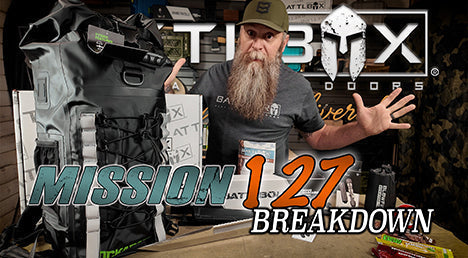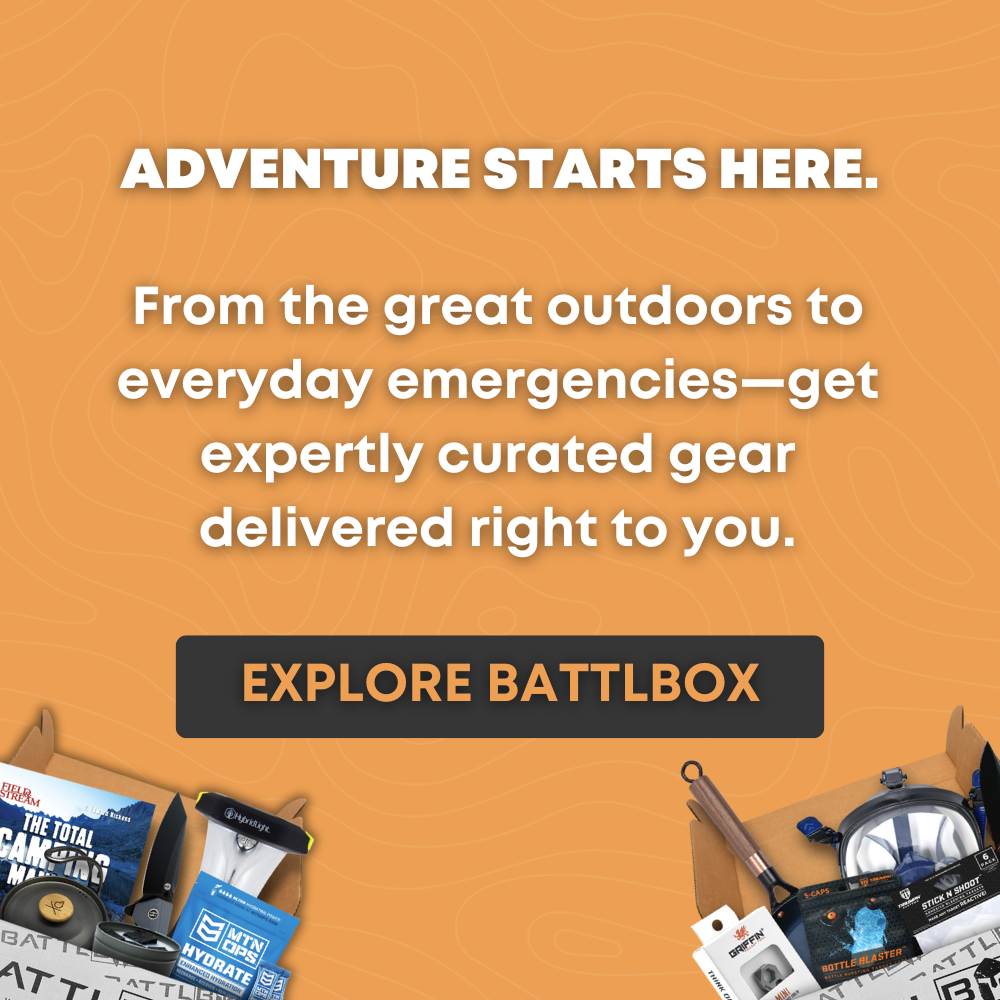Battlbox
What Food to Pack for a 3 Day Backpacking Trip
Table of Contents
- Introduction
- Understanding Your Nutritional Needs
- Choosing the Right Foods
- Snacks to Keep You Energized
- Packing and Preparation Tips
- The Role of Hydration
- Conclusion
- FAQ
Introduction
Picture this: You're standing at the edge of a breathtaking wilderness, surrounded by towering trees and the distant sound of a flowing river. The excitement of a three-day backpacking trip is palpable, but there's one crucial question looming over your adventure: What food to pack for a 3 day backpacking trip? This is a question that every backpacker must answer before hitting the trail, and getting it right can make the difference between an enjoyable experience and one filled with hunger pangs and regret.
Planning meals for a multi-day hike requires careful consideration of nutrition, weight, and convenience. After all, every ounce counts when you're carrying your food on your back. The significance of packing the right food is not just about satisfying hunger; it's about fueling your body for the physical challenges ahead and enhancing your overall experience in nature.
In this blog post, we will explore the essential aspects of meal planning for a three-day backpacking trip. You will learn about the types of food to include, how to maintain a balanced diet while on the trail, and tips for packing and preparing meals. By the end of this guide, you'll be equipped to create a meal plan that not only meets your caloric needs but also keeps your spirits high during your outdoor adventure. So, let’s dive in and discover what food to pack for a three-day backpacking trip!
Understanding Your Nutritional Needs
Caloric Requirements
Before you select your meals, it's essential to understand how many calories your body needs while backpacking. On average, you should aim for around 2,500 to 4,000 calories per day, depending on your activity level, body weight, and the difficulty of the terrain. Generally, a good rule of thumb is 2 lbs of food per person per day. This ensures you have enough energy to power through the challenges of the trail.
When planning your meals, focus on caloric density—that is, the number of calories per ounce of food. Foods that are high in fats, such as nuts and oils, provide more calories for less weight. This is a vital consideration when packing for a three-day trip.
Macronutrients: Balance is Key
In addition to total caloric intake, it's crucial to balance your macronutrients:
- Carbohydrates: These are your primary energy source. Focus on whole grains, fruits, and vegetables.
- Proteins: Important for muscle repair and recovery. Include items like jerky, nuts, and protein bars.
- Fats: Essential for long-lasting energy. Incorporate nuts, seeds, and oils.
A well-rounded backpacking meal should include a mix of these macronutrients for optimal energy and recovery.
Choosing the Right Foods
Breakfast Ideas
Starting your day with a fulfilling breakfast sets the tone for your hiking experience. Here are some excellent options:
- Instant Oatmeal: Quick to prepare and easy to pack. Boost the caloric content by adding nuts or dried fruits.
- Protein-packed Pancakes: Use a pancake mix that requires only water and add protein powder for an extra boost.
- Granola Bars or Nut Bars: Lightweight and calorie-dense, these are perfect for a quick breakfast on the go.
Lunch Options
For lunches, aim for no-cook, easy-to-assemble meals. Here are a few ideas:
- Tortilla Wraps: Fill them with salami, cheese, and mustard for a satisfying meal.
- Peanut Butter and Jelly Tortillas: A classic that’s easy to pack and provides a great energy boost.
- Trail Mix: Create your own mix with nuts, seeds, dried fruits, and chocolate for a quick energy pick-me-up.
Dinner Selections
After a long day of hiking, a hearty dinner is essential. Here are some great choices:
- Dehydrated Meals: Brands like Backpacker’s Pantry and Mountain House offer a wide range of flavors that only require hot water to prepare.
- Ramen Noodles: A lightweight option that can be enhanced with added protein like chicken or tofu.
- Couscous or Rice Dishes: Quick to cook and can be made more nutritious with the addition of dehydrated vegetables and protein.
Snacks to Keep You Energized
Snacks are crucial for maintaining energy levels throughout the day. Here are some favorites:
- Nut Butter Packets: Easy to carry and a great source of energy.
- Beef Jerky: Packed with protein and lightweight.
- Energy Bars: Look for high-calorie options that provide a good balance of carbs, fats, and protein.
- Dried Fruits: A sweet treat that also provides essential nutrients.
Packing and Preparation Tips
Meal Prep
Preparing your meals ahead of time can save you time and hassle on the trail. Consider the following:
- Repackage Food: Divide meals into individual bags to keep your food organized and to reduce packaging waste. Use resealable bags or containers to minimize space.
- Plan Each Day: Create a meal plan for each day of your trip, including breakfast, lunch, dinner, and snacks. This helps ensure you have enough food and prevents overpacking.
Food Safety and Storage
When out in nature, food safety is paramount. Here are some tips:
- Bear-Proof Containers: Depending on your location, you may need to store food in bear canisters or hang it from a tree to avoid attracting wildlife.
- Hydration: Carry a reliable water filtration system or purification tablets to ensure access to clean water for cooking and drinking.
The Role of Hydration
While food is crucial, hydration is equally important. Aim to drink at least 2-3 liters of water per day, depending on the climate and your activity level. Consider carrying electrolytes to replenish lost salts, especially on hot days.
Conclusion
Packing the right food for a three-day backpacking trip is a balance of nutrition, caloric needs, and convenience. By carefully selecting your meals—focusing on caloric density and a good mix of macronutrients—you can ensure that you have the energy you need to tackle the trails with confidence and enthusiasm.
As you prepare for your next adventure, consider exploring Battlbox’s Camping Collection for essential gear to make your trip even more enjoyable. And if you're looking for a reliable source of quality food options, check out the Battlbox Shop for all your outdoor needs.
Are you ready to hit the trails with your carefully planned meals? Embrace the journey, fuel your adventure, and make unforgettable memories in the great outdoors!
FAQ
How do I determine how much food to pack?
As a general rule, plan for about 2 lbs of food per person per day. This allows for sufficient caloric intake while keeping your pack manageable.
What are some lightweight food options for backpacking?
Lightweight options include dehydrated meals, energy bars, nuts, and dried fruits. These foods provide essential nutrients without adding excessive weight.
Can I bring fresh food on a backpacking trip?
Fresh food can be included, but it’s best to limit it to the first day of your trip, as it has a shorter shelf life. Consider items like apples or bell peppers, which are more durable.
Should I bring extra food in case I get hungry?
While it’s wise to have a little extra, avoid overpacking as it can add unnecessary weight. Instead, consider bringing high-calorie snacks like energy bars.
What are the best ways to pack food for a backpacking trip?
Repackage meals into resealable bags, plan your meals for each day, and use waterproof containers to protect your food from moisture and wildlife.
Share on:

















